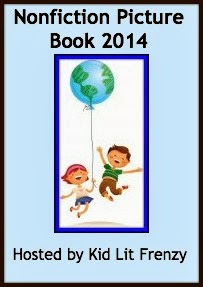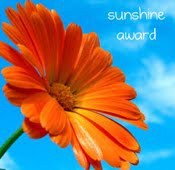
We know that a big part of the CCSS is to include more informational texts into our students' reading. I quickly discovered I had a "gap" in my reading diet - the genre of informational texts! To help me fill the gap this year, I am going to participate in Nonfiction Picture Book Wednesdays! This is a great link-up hosted by Kid Lit Frenzy. Please visit this website to see other educator's link-ups. My goal is to read at least one informational text each week and post information on the blog. The more books and subjects I read, the more I can encourage (my #OLW for 2014) other teachers to use in their classroom!
Can you believe it's almost February? Maybe by the end we'll see a hint of the grass that is under all of this snow??? Hahahaha! Funny, right?
Black History Month is during the month of February, so thought I would kick off the month with some standout recent releases that spotlight some fabulous historic contributions to the African American culture.

This is the Rope: A Story From the Great Migration by Jacqueline Woodson
This is the fictionalized account of the author's family and their move from South Carolina to New York City. The author included her note about this time period at the beginning of the book, which helped me understand the book more instead of putting it in the back of the book.
CCSS connection: RL.4 - talk about the words the author used to describe the rope. How did the author feel about the rope? How did you know? Make a list of the words that the author used when discussing the rope. Any patterns? What could this mean?
RI.7 - Do a close reading of the author's notes and then discuss the places in the story/text that have a connection with the author's notes.
RI.9 - compare this fictionalized account to an article or story that gives additional information about The Great Migration
Recommended grade levels: 2nd-4th grade

Josephine by Patricia Hruby Powell
I loved this book. It is a narrative biography about Josephine Baker who was an American dancer, who because of the time period she lived in (segregation, racism), did most of her performing overseas, particularly in France. This longer picture biography is told in verse and the author plays with the fonts and size which adds to the meaning. I liked that the author used many quotes (and cited them!) to make the verse even more authentic.
Because of the difficult times Josephine lived in, there are numerous mentions of words that might be more appropriate for an older audience (ex. rape, beat, murder and other time-era vocabulary sensitive words - Negro, colored, Ku Klux Klan). However, the majority of the story would be good for younger ages, as well. If sharing with a younger grade, skip over selected words/phrases/sections. This story lends itself to many close reading activities.
CCSS connections RI.4 - What did the author do to help you understand the vocabulary? Pay attention to the words that were altered, is there a pattern? Do a close reading of a couple pages to look for those patterns.
RI.2 - Select a few sections and look for themes that are present. How do those themes describe who Josephine was as a person? About the time she grew up in?
Recommended grade levels: 5th grade and up
Selected close reading passages: use with 3rd grade and up

Harlem's Little Blackbird - The Story of Florence Mills by Renee Watson
Biography of Florence Mills who was famous for her dancing and singing abilities. She performed around the United States in the early 1900s. Would be a great book to use to talk about the contributions of African Americans that students might not have heard of.
CCSS connections RI.9 - compare to Josephine! It would be a great activity - what were their contributions? How did the time period they grow up in affect their performing?
Recommended grade levels: 2nd-5th grade

Something to Prove - The Great Satchel Paige vs. Rookie Joe DiMaggio by Robert Skead
Great story that informs the reader about one important day in the lives of baseball greats Joe DiMaggio and Satchel Paige. One of the underlying themes of the story is racism and the unfair treatment of African Americans during the 1900s. The author's notes at the end were helpful because since this book was a "day in the life of" book, I wanted to know more about what happened to Satchel Paige and this part gave me a few more details.
CCSS connections RI.4 - the author uses great words that would be prefect for a study of patterns and use (baffled, fret, showdown, unique, flummoxed)
RI.2 - theme
Recommended grade levels: 3rd-5th grade


































